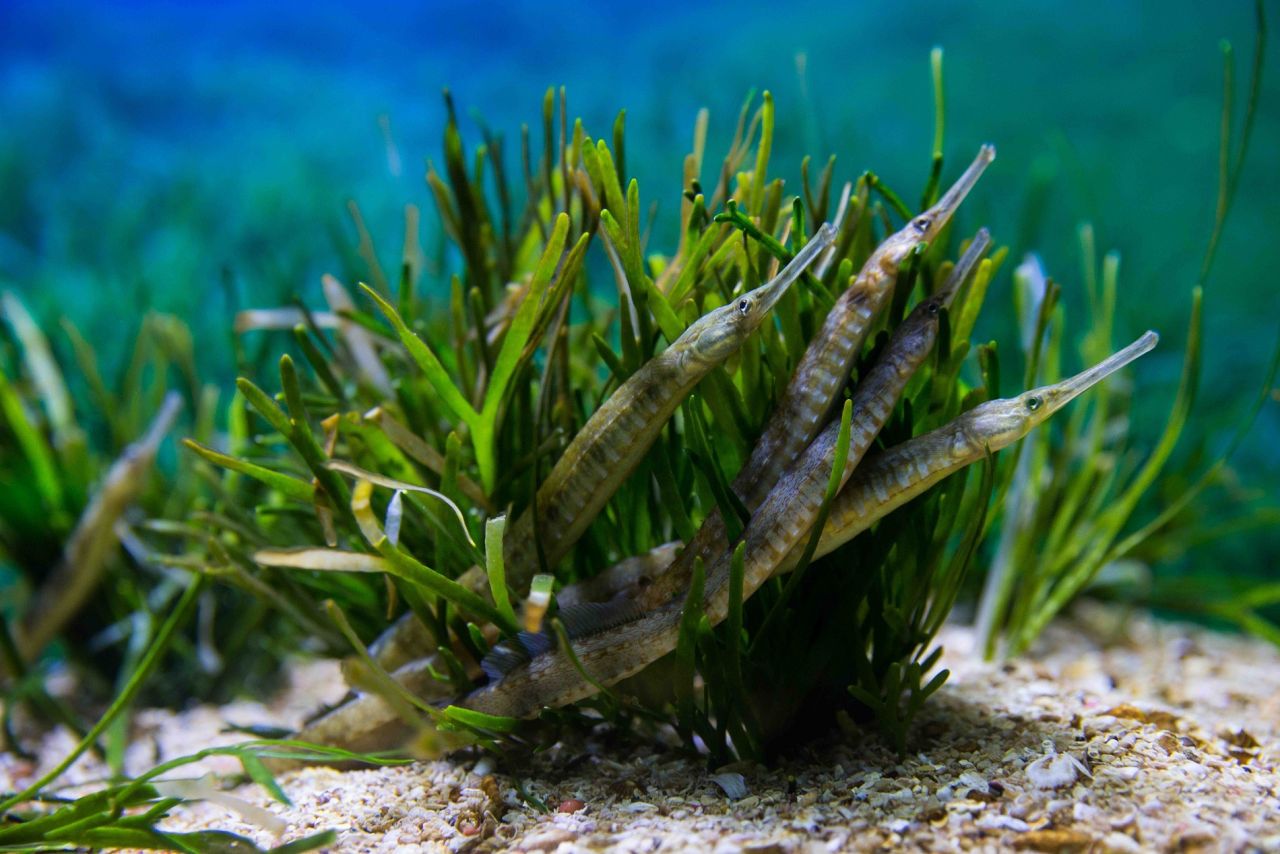Appearance and lifestyle:
The longsnout pipefish (Syngnathus acus) has a straight, segmented body and varies from greenish to brown, with alternating lighter bands down its body. There is a dorsal fin down the back and a delicate fanned tail but no ventricle fins – hence the apt name. Pipefish are related to seahorses. Like seahorses, male pipefish carry developing embryos in a pouch on their bellies and give birth to live young. They can grow up to 32cm long.
Habitat:
The Pipefish is found throughout South African waters. It occurs in the waters off southern Africa from Walvis Bay to the Thukela Bank on the Kwa-Zulu Natal coast. In South Africa, the greatest density of pipefish occurs along the southern part of the West Coast and around the Southern Cape coast. As you move eastward along the southern coast, the population starts to thin out – and differentiate. Most pipefish live in tidal pools and other coastal habitats. However, one species lives in the intestine of a species of sea cucumber!
Diet:
Pipefish feed on live crustaceans, zooplankton and prawns.
Threats:
Some of the threats faced by the pipefish are habitat loss, climate change, human activity and water pollution.
